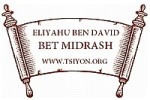Need to talk to us? - In the USA and Canada just call us toll free at (888) 230-2440 for help. Internationally, email us and we will arrange a phone or Skype call for you.
From Eliyahu
Dear friends,
Separation is a creative activity. To create the world YHWH separated light from darkness, day from night, the waters above from the waters below, the sea from the dry land, even woman from man - and much more. Appropriate separation creates distinctions of one thing from another. Without such distinctions there can be no component parts of any system, making orderly function of the world an impossibility. In large part, the Torah is about the separations and distinctions that YHWH has ordained, especially the separation of Israel from all the nations of the world as His "holy nation." Holiness is taught in the Torah and, fundamentally, holiness means things and people separated apart to YHWH, our Creator, for His own unique creative purposes.
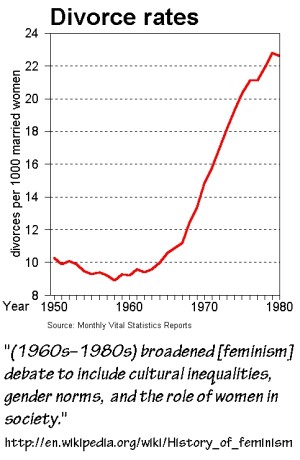 When
we start to see that separation and distinction is a vital part of the creative
activity of YHWH we can then start to see why the enemy of our souls is so busy
attacking every separation and distinction that YHWH has commanded in His Torah.
hasatan is so subtle about it, though. Instead of telling you that he is trying
to use you to tear down the perfect order of YHWH, he instead tells you, as he
did Eve, that there should be no distinctions - no "discrimination." After all,
we should all be "equal" - right? This sounds good, maybe even right, at first.
However, if this is right how come "equality" can lead to a sort of
anti-creativity, that is, to chaos and destruction?
When
we start to see that separation and distinction is a vital part of the creative
activity of YHWH we can then start to see why the enemy of our souls is so busy
attacking every separation and distinction that YHWH has commanded in His Torah.
hasatan is so subtle about it, though. Instead of telling you that he is trying
to use you to tear down the perfect order of YHWH, he instead tells you, as he
did Eve, that there should be no distinctions - no "discrimination." After all,
we should all be "equal" - right? This sounds good, maybe even right, at first.
However, if this is right how come "equality" can lead to a sort of
anti-creativity, that is, to chaos and destruction?
For example, consider the feminist revolution of 1960-1980 in the USA. It was all about "equality" for women. Sounds like a good thing, right? Most people today would say so. However, I lived through those years and my impression is that most people I've known were much happier in the 50s then at any time since the new "equality" between the sexes. Look at the chart to the left. During the 50s the divorce rate was already low and was even going down! Call me crazy, but that suggests to me a time of social stability and even happiness for the majority of married people (almost all adults back then) - and more importantly, for their children. Then in the 60s radical feminists started telling women how "oppressed" they all were as women and that this "discrimination" needed to be removed! Society's elite and the press got behind that message and energized it, so that it caught on, permeated society quickly, and was even written into law pretty much across the board. That societal shift toward "equality" for women ("feminism") was such a wonderful change, from then on women and their families were much happier and better off than ever before - NOT!
Look at the chart! Divorces went through the roof, families were destroyed, children were traumatized, were institutionalized, and unborn children were murdered, as the greatest social experiment since the tower of Babel literally set the country on the road to extinction. Indeed, in 1973 feminism brought us the Supreme Court decision known as Roe vs Wade. Since then more than 57,424,933 unborn babies have been legally murdered in an ocean of blood flowing from the altar of the feminist Jezebel goddess. Apparently "equality" is not a value that applies to the innocent unborn, since they are too helpless to file a court case to protect themselves from being murdered!
Where is all of this taking us? The rivers of misery and bloodguilt flowing forth from the "equality" deception is choking and drowning this country to death. A putrid cloud of doom covers the land wherever you go. Nearly every American today is in despair over the decidedly negative direction the country is taking on pretty much every front. Most are not old enough, however, to trace this particular social disaster back to its roots in the 60s forward. It is too late for many of those pitiful young zombies, because "equality" has been enshrined as their only value, and they are too indoctrinated by years of systematic mind control to make the mental leap to sanity. Perhaps the latest bid for "equality" - homosexual "marriage" - will save the day, some think. What's next after that? Pet "equality" maybe? Some of the zombies think so. Surely, removing more distinctions will make everyone freer, therefore happier, right? Do you see it? Removing separations and distinctions - this is how hasatan works to reverse the creative activity and perfect order of YHWH, to destroy you and me and everything that is "holy." By now this scheme is far advanced, and an evil darkness proceeding from it enshrouds the whole world.
Friends, the wisdom of this world is foolishness with Elohim. Don't be all that impressed with the doctors, lawyers, scientists and other experts of this world, including the religious leaders. If they don't play along with the world's agenda they don't get paid. They may have impressive credentials but most of them are actually just satan's whores. They don't care if you are destroyed because you follow and listen to them. Don't you get it? It is all about their status, and their payday. If you are seduced as the serpent seduced Eve then you must pay a horrible price, far more than money. If you ever do actually get the things the world promises you for adopting their norms and mind-set - and that is a big IF - you still won't be happy. That's because the heart-ache and misery that goes along with the bribe, as satan's little bonus just for you, will soon negate any perceived benefits the enemy directed at you as selling points.
For your own good - open your eyes and see the truth!
Here it is: In reality the world has nothing to offer you but lies and empty promises. Wake up and get a clue! It is time to return to separation - to holiness - to YHWH, to His Torah, to His Messiah.
Separate yourself to YHWH, while there is yet time.
Separate yourself from a world headed off a cliff.
Get off the fence and choose a direction - the right direction. Return to holiness.
Separate yourself to YHWH. Do it now, and live.
Blessings and Shalom,
Eliyahu Ben David
PS - The article below concerns the silver scrolls discussed in our latest Midrash.
________________________________________________________
SILVER SCROLLS CONFIRMED
Reprint from: Spring 2006 issue of Bible and Spade.
Numbers 6:24–26 contains one of the central passages of Scripture, known as the “Priestly” or “Aaronic” Benediction:
The LORD bless you and keep you; the LORD make his face shine upon you and be gracious to you; the LORD turn His face toward you and give you peace.
Evidence for the antiquity of this passage has now been found.
Excavations in Jerusalem in 1979–80 by Gabriel Barkay turned up two amulets dating from the late seventh century BC.1 They were found in the fourth of several burial caves he discovered on an escarpment known as Ketef Hinnom, which overlooks the Hinnom Valley (Gehenna) just opposite Mt. Zion. Each amulet contained a rolled-up sheet of silver which, when unrolled, revealed the Priestly Benediction inscribed on them. The exact Hebrew words (translated into English) are:
May Yahweh bless you and keep you;
May Yahweh cause his face to
Shine upon you and grant you
Peace (Coogan 1995: 45).
Commented the late archaeologist Kathleen Kenyon:
This is now the earliest occurrence of a Biblical text in an extra-Biblical document, significantly predating the earliest of the Dead Sea Scrolls. It is also the oldest extra-Biblical reference to YHWH, the God of Israel (1987: 124; cf. King and Stager 2001: 306).
Time magazine, reporting on the find, stated that this discovery suggests that at least part of the Old Testament was written soon after some of the events it describes (Lemonick 1995: 65)...The discovery made it clear that parts of the Old Testament were being copied long before some skeptics had believed they were even written (ibid., 67).
Michael D. Coogan, professor of religious studies at Stonehill College in Massachusetts, similarly remarked that
the two amulets are evidence of the antiquity of traditions preserved in the Bible; it also provides indirect evidence, as do the Dead Sea Scrolls and other manuscripts from the Second Temple period, of the accuracy of scribes who for centuries copied sacred texts (1995: 45).
Especially interesting to note is the fact that the words of the blessing, including the sacred personal name of God, were written on silver. This sheds light on Psalm 12:6: “The words of the LORD [= YHWH] are pure words: as silver tried in a furnace...” Barkay’s discovery thus shows this verse to be literally true as well as spiritually.
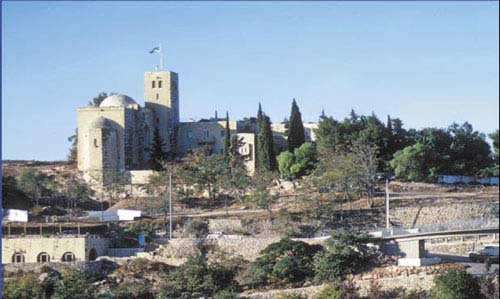
St. Andrews Church as seen from the Hinnom Valley. The Iron Age tomb where the silver scrolls were found is located in the rock outcrop in front of the church.
Pre-exilic Date Reaffirmed
Critics who maintain that very little of the Bible is historically trustworthy claimed that the scrolls were written in the Hellenistic (Inter-Testamental) Period, rather than being genuine products of the Old Testament era (Barkay et al. 2000: 41, 43). Recently, the West Semitic Research organization in California took “detailed, high-resolution images” of the unrolled scrolls, and these images have revealed features of the scrolls’ Hebrew lettering that had previously been undetectable. This new evidence was examined by a group of scholars consisting of Gabriel Barkay of the Department of Land of Israel Studies at Bar Ilan University; Andrew G. Vaughn of Gustavus Adolphus College; Marilyn J. Lundberg of West Semitic Research; and Bruce Zuckerman of the University of California’s School of Religion. They concluded that the new revelations enabled them to “reaffirm with confidence that the late preexilic period is the proper chronological context for the artifacts” (Ibid.).
When pictures were first taken of the scrolls in the late 1980s, the best available photographic technology “did not permit a close and careful examination of the epigraphic and palaeographic details,” according to Barkay and his colleagues. However, new photos were taken in 1994, and,
[w]ith the aid of innovations in photographic and computerimaging technology, high resolution digital images have been made of these texts... which allow for a fresh investigation of the readings and script found on these inscriptions...The new images reveal traces of letters that were not previously identified as well as clarification of letters that were previously much harder to read and identify.
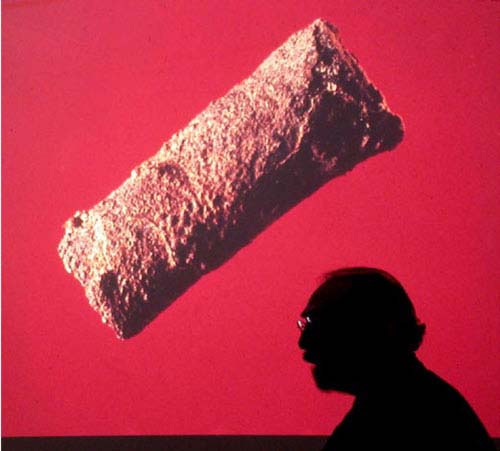
One of the silver scroll amulets before it was unrolled as seen on screen in a recent slide lecture. The silhouette is that of Gabriel Barkay, the archaeologist responsible for the discovery. Museums in England and Germany were given the opportunity to unroll the scrolls, but declined because of the delicate nature of the operation. Three years after their discovery, the scrolls were finally opened by conservators at the Israel Museum.
Based on the new readings, the four scholars concluded that the scrolls date from the horizon of the end of the Judaean monarchy—or a palaeographic date of the late seventh century BC to early sixth century BC (ibid., 42).
The chief reason that critical scholars dated the scrolls to the Hellenistic Period was that the letterforms as they appeared in the inferior photographs from the 1980s were used only in post-exilic Hebrew inscriptions. Barkay and his team noted (ibid., 50):
Most of these supposed forms, however, are a result of misunderstandings due to the poor quality of the data available to researchers in the past. The new photographs enable a much closer and more accurate study of the palaeography than has hither to been possible.
In particular, critics had noted that the Hebrew letters hê, wāw, yôd, and kāp displayed what appeared to be distinct characteristics of post-exilic Hebrew writing.2 For example, the second and third cross-strokes of the hê of Amulet I, line 9, appear to form a triangle. This style only appears on Paleo-Hebrew coins of the second and first centuries BC. “The new photographs, however,” observes Barkay’s team, “show that the second and third cross strokes do not, in fact, meet” (ibid., 50). This discovery thus removes one argument against a pre-exilic date.
Similarly, all the occurrences of the letter yôd in Amulet II seemed, in the original photos, to lack a middle cross-stroke, another characteristic of post-exilic Paleo-Hebrew. Again, the more recent images have shown that these middle cross-strokes are indeed present, but executed in such a stylized manner that they did not show up in the earlier photographs. Except for this stylistic flair, the yôds of Amulet II match those of Amulet I, as well as those found on other Paleo-Hebrew inscriptions of the late pre-exilic period, such as the famous Gibeon jar handles and numerous Hebrew seals (ibid.).
On Amulet I, the letter kāp appeared originally to resemble a “T” leaning 45º clockwise. Another form of the same letter resembled a “V.” These two forms do not appear in Hebrew until the Intertestamental Period, such as on Paleo-Hebrew coins from that era. However, the new images have revealed that neither of these two forms actually appears on Amulet I. Instead, the kāps are formed like an inverted “T,” a form that is based on a pattern from the two most famous collections of Paleo-Hebrew writings from the Old Testament Period, the Arad Ostraca (seventh–sixth centuries BC) and the Lachish Letters, specifically Lachish 2 and 3 (ibid.). The Lachish Letters date from—and specifically refer to—the conquest of Jerusalem by the Babylonians.
Another aspect of the kāps of Amulet I is that they, like our lower-case “p,” have a tail that extends below the line. Critics were unable to view this in the original photographs, leading them to a date in the Intertestamental Period, since the kāp of that time had a curved tail that did not extend below the line. The new images have revealed that the tails of the kāps in Amulet I do indeed extend below the line, in conformity with other examples of kāps from the pre-exilic period, but not with post-exilic kāps (ibid., 50, 52).
Critics also maintained that the occurrences of the letter wāw on Amulet II are of a type not found in pre-exilic inscriptions. The improved photographs, however, demonstrate that the wāws of Amulet II “are entirely at home in the preexilic period,” because they overtly resemble the wāws found in numerous inscriptions from the late eighth through sixth centuries BC, such as Tel Gemme Ostracon 3 and Lachish Letter 1:2 (ibid., 52). Another observation made by Barkay’s team was that, in the Paleo-Hebrew script of the post-exilic period, the middle cross-stroke of the head of the wāw slopes upward, while this same stroke slopes downward or horizontally in pre-exilic script. Both of the Ketef Hinnom scrolls have wāws that feature the distinctly pre-exilic method for writing that particular letter (ibid.)
From palaeography (the formation of individual letters), Barkay’s team moved on to orthography (the standardized spelling of Paleo-Hebrew words). Hebrew began as a purely consonantal alphabet, meaning that it had no written vowels. As time passed, confusion naturally arose as to the correct pronunciation of words, so scribes in the Intertestamental Period developed the concept of the mater lectionis (pl. matres lectionis), by which letters such as wāw, yôd, and hê were inserted to signal the correct pronunciation. Critics believed they had spotted a wāw as a mater in lines 11–12 of Amulet II, thus suggesting a post-exilic date. However, the new images have revealed that what had initially been taken as a wāw was actually a break in the inscription, not a mater (ibid., 53). Similarly, a yôd appearing in the word pnyw (“His [God’s] face”) in line 9 of Amulet II was taken as a sign of post-exilic origin, since it was thought to be a mater. It turns out, however, that the yôd of pnyw is not a mater but actually part of an original, pre-mater ending meaning “his.” It appears thus in Lachish Letter 6:12–13 (’lhyk), Lachish Letter 6:6 (ydyk), Khirbet Bet Lei 1:1 (’lhykh), and Arad Ostracon 7:6 (lpnyk) (ibid.).
In Amulet I, line 11, wāw appears to have been used as a masculine singular personal pronoun in the phrase bw (“in Him”). Initially, it was believed that the use of wāw in this function did not begin until the fourth century BC (ibid., 54). However, the Siloam Inscription, which actually dates to a time earlier than the silver scrolls, features this exact use of the wāw as a third masculine singular suffix on a word: r’w, “his fellow,” appearing in lines 2, 3, and 4 of that famous inscription. The exact same word appears in Jeremiah 6:21 (ibid., 60). The Book of Jeremiah, of course, takes place during the fall of Jerusalem to the Babylonians, making it a contemporary of the silver scrolls.
As for Amulet II, its verbiage shows marked similarities to other Paleo-Hebrew inscriptions from the time of the Biblical kings. One example is in the writing style itself: the scribe tended to make the downstroke of his letters the last in order of strokes. This has an exact parallel in the Gibeon jar handles, which were contemporary with the silver scrolls (ibid., 62). Line 2 contains another significant parallel: the phrase “May X be blessed by Yahweh” finds an almost exact parallel in the Kuntillet ‛Ajrud inscriptions of the mid-eighth century BC, which contain the phrase “For ‛Abdyau ben ‛Adnah; blessed be he by Yahu.” Additionally, lines 5–6 of Amulet II (“May Yahweh bless you, keep you”) are highly similar to another of the Kuntillet inscriptions, which states: “May He [God] bless you; may He keep you and may He be with my lord” (ibid., 64).

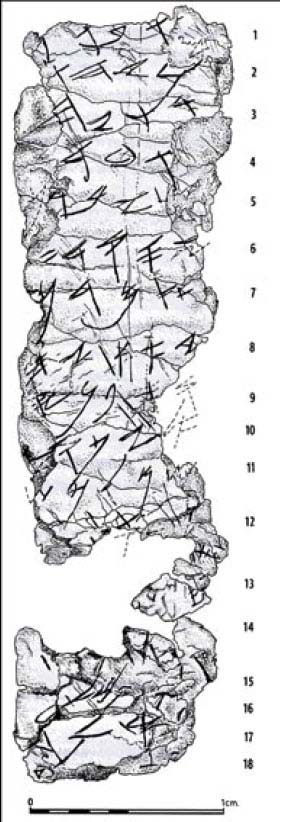
Ketef Hinnom Amulet I (left/top) and Ketef Hinnom Amulet II (right/bottom). When the amulets were unrolled, scholars were amazed to learn that they were inscribed with an abridged version of the priestly benediction of Numbers 6:24–26—the oldest portion of Scripture ever found.
Improved Translation
Thus, the improved images of the two scrolls have nullified the arguments in favor of a post-exilic dating. They have done more than that, however. The more advanced images have allowed paleographers to better decipher the inscriptions, and the words thereon have proved to have direct parallels with numerous Old Testament passages. Amulet I, as revealed by the new imaging, reads:
[...]YHW...the grea[t...who keeps] the covenant and [G]raciousness toward those who love [Him] and those who keep [His commandments...]. The Eternal? [...]. [the?] blessing more than any [sna]re and more than Evil. For redemption is in Him. For YHWH is our restorer [and] rock. May YHWH bles[s] you and keep you. [May] YHWH make [His face] shine…” (ibid., 61).
Amulet II, thanks to the new imaging, reads:
[First line almost completely illegible.] May h[e]/sh[e] be blessed by Yahweh, the warrior [or “helper”] and the rebuker of [E]vil: May Yahweh bless you, keep you. May Yahweh make His face shine upon you and grant you p[ea]ce” (ibid., 68).
There are numerous examples of how these passages reflect the Old Testament. Lines 2–7 of Amulet I, which mention God’s covenant with Israel, and His graciousness and love toward those who love Him and keep His commandments,
...fit, at least loosely, a Biblical parallel attested in Daniel 9:4 and Nehemiah 1:5 (with a similar reading in Deuteronomy 7:9)...“the great and fearful God who keeps the covenant and steadfast love for those who love him and to those who keep his commandments” (ibid., 55).
Of this passage Barkay’s team commented,
the new photographic data allow us to confirm that the reading in these lines is actually closer to the Biblical parallels than previously recognized (ibid.).
Another Biblical parallel from Amulet I is found in line 13, which refers to God as “our restorer.” According to Barkay et al., this word usage is not personal or cultic, “but rather national, or corporate, pertaining to the whole of the life of the people of Israel” (ibid., 68). This image of God as the restorer of Israel as a nation has a direct parallel in Isaiah 1:26, where God speaks to apostate Jerusalem: “I will restore your judges as in the days of old, your counselors as at the beginning.” In Isaiah 49:6, God says to the great prophet, “It is too small a thing for you to be my servent to restore the tribes of Jacob and bring back those of Israel I have kept.”
Referring to the people of Israel as a corporate whole, God states in Isaiah 57:18, “I have seen his ways, but I will heal him; I will guide him and restore comfort to him.”
In line 4 of Amulet II, the phrase “the rebuker of Evil” has direct or close parallels with the Ugaritic tablets of the 13th century BC, as well as with later Aramaic and Hebrew incantation texts, and with several Old Testament passages, such as Isaiah 17:13, Nahum 1:4 and Psalms 18:16; 106:9. It also appears in Zechariah 3:2, in which God is shown as the rebuker of Evil personified―Satan: “The LORD said unto Satan, The LORD rebuke you, Satan.” Thus, the image in the second scroll of God rebuking Evil personified has a direct parallel in the Old Testament (ibid., 65–66).
Based on these various findings, Barkay and his colleagues concluded:
the late preexilic date [for the scrolls] should be reaffirmed with confidence as the proper chronological context for the Ketef Hinnom inscriptions. We can thus reassert the conclusion reached by most scholars that the inscriptions found on these plaques preserve the earliest known citations of Biblical texts. The new readings…show that these plaques not only contain Biblical quotations, but they also provide us with the earliest examples of confessional statements concerning Yahweh (ibid., 68).
These startling new discoveries have laid to rest any reasonable doubts as to the authenticity of the pre-exilic date of the silver scrolls from Ketef Hinnom and their direct relation to the Biblical texts. The initial doubts were based on lack of knowledge, doubts that have now been answered, thanks to modern technology.
Notes
1.
For a detailed description of the discovery of the amulets, see Gordon
Franz, “Remember, Archaeology is NOT a Treasure Hunt” in the Spring 2005 issue of Bible and Spade.
2.
The “Hebrew” alphabet, used in Modern Hebrew as well as in the Jewish
Scriptures from the time of Ezra onward, is technically referred to as
“Square Aramaic.” This is because the Jewish scribes of the Babylonian
Exile switched from the original alphabet of the Old Testament books,
known to scholars as Paleo-Hebrew, to the Aramaic alphabet, because
Aramaic—“the Syrian tongue” of Ezra 4:7 (KJV)—had by that time become
the international language.
References
Barkay, Gabriel; Vaughn, Andrew G; Lundberg, Marilyn J.; Zuckerman, Bruce
2000 The Amulets from Ketef Hinnom: A New Edition and Evaluation. Bulletin of the American Schools of Oriental Research 334: 41–70.
Coogan, Michael D.
1995 10 Great Finds. Biblical Archaeology Review 21.3: 36–47.
Kenyon, Kathleen M.
1987 The Bible and Recent Archaeology, rev. ed., ed. Peter R.S. Moorey. Atlanta: John Knox.
King, Philip J., and Stager, Lawrence E.
2001 Life in Biblical Israel. Louisville : Westminster John Knox.
Lemonick, Michael D.
1995 Are the Bible’s Stories True? Time, 18 December.
________________________________________________________
Need to talk to us? - In the USA and Canada just call us toll free at (888) 230-2440 for help. Internationally, email us and we will arrange a phone or Skype call for you.
